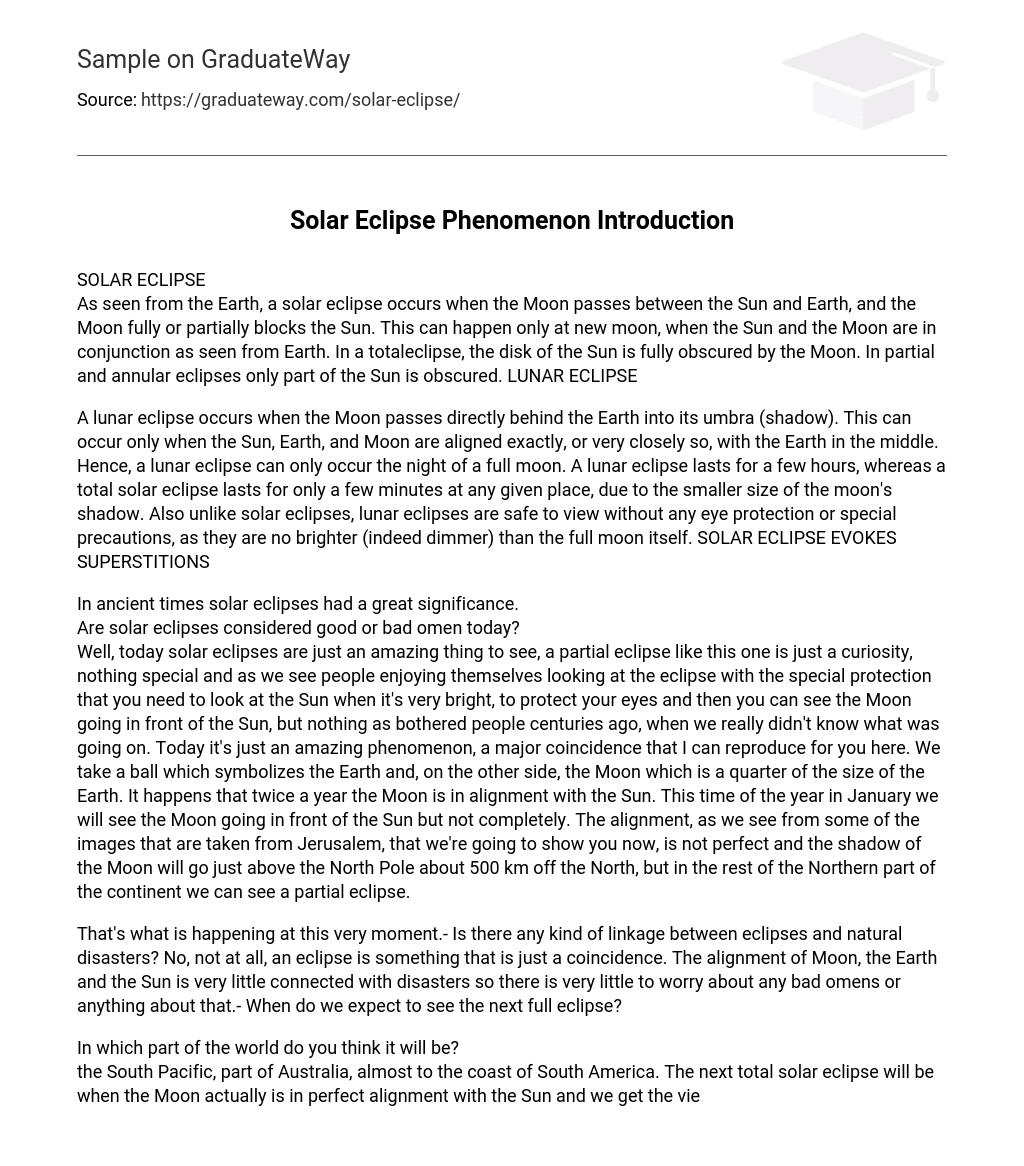SOLAR ECLIPSE
As seen from the Earth, a solar eclipse occurs when the Moon passes between the Sun and Earth, and the Moon fully or partially blocks the Sun. This can happen only at new moon, when the Sun and the Moon are in conjunction as seen from Earth. In a totaleclipse, the disk of the Sun is fully obscured by the Moon. In partial and annular eclipses only part of the Sun is obscured. LUNAR ECLIPSE
A lunar eclipse occurs when the Moon passes directly behind the Earth into its umbra (shadow). This can occur only when the Sun, Earth, and Moon are aligned exactly, or very closely so, with the Earth in the middle. Hence, a lunar eclipse can only occur the night of a full moon. A lunar eclipse lasts for a few hours, whereas a total solar eclipse lasts for only a few minutes at any given place, due to the smaller size of the moon’s shadow. Also unlike solar eclipses, lunar eclipses are safe to view without any eye protection or special precautions, as they are no brighter (indeed dimmer) than the full moon itself. SOLAR ECLIPSE EVOKES SUPERSTITIONS
In ancient times solar eclipses had a great significance.
Are solar eclipses considered good or bad omen today?
Well, today solar eclipses are just an amazing thing to see, a partial eclipse like this one is just a curiosity, nothing special and as we see people enjoying themselves looking at the eclipse with the special protection that you need to look at the Sun when it’s very bright, to protect your eyes and then you can see the Moon going in front of the Sun, but nothing as bothered people centuries ago, when we really didn’t know what was going on. Today it’s just an amazing phenomenon, a major coincidence that I can reproduce for you here. We take a ball which symbolizes the Earth and, on the other side, the Moon which is a quarter of the size of the Earth. It happens that twice a year the Moon is in alignment with the Sun. This time of the year in January we will see the Moon going in front of the Sun but not completely. The alignment, as we see from some of the images that are taken from Jerusalem, that we’re going to show you now, is not perfect and the shadow of the Moon will go just above the North Pole about 500 km off the North, but in the rest of the Northern part of the continent we can see a partial eclipse.
That’s what is happening at this very moment.- Is there any kind of linkage between eclipses and natural disasters? No, not at all, an eclipse is something that is just a coincidence. The alignment of Moon, the Earth and the Sun is very little connected with disasters so there is very little to worry about any bad omens or anything about that.- When do we expect to see the next full eclipse?
In which part of the world do you think it will be?
the South Pacific, part of Australia, almost to the coast of South America. The next total solar eclipse will be when the Moon actually is in perfect alignment with the Sun and we get the view of the external atmosphere of the Sun which is very faint, only visible in those times.





